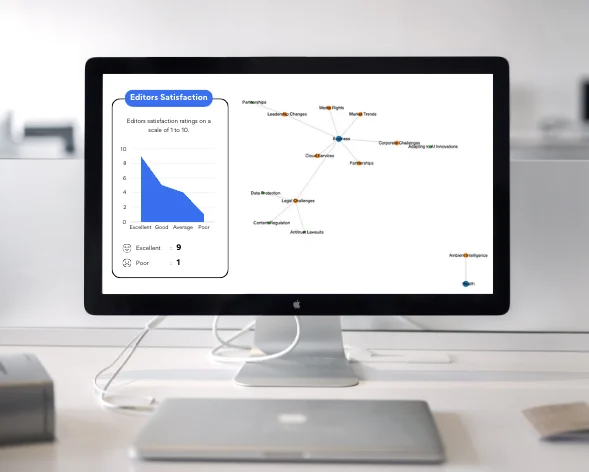
AI solutions that boosted the hospital’s operational efficiency and patient care.
Client
US-based hospital looking to leverage AI to optimize its patient care process.
Objective
Client tasked our team with developing an AI-driven system that can identify the most promising cancer patients for treatment in a hospital overwhelmed by a patient load ten times greater than its capacity. The AI will also predict the probability of successful treatment for each patient.
Solution
Our approach to this extensive project was divided into three key phases:
Phase 1: Data extraction and preparation
The hospital stores patient information in the Cerner EMR system, but much of this data exists in unstructured PDF format. This format hinders the effective use of AI. Therefore, the initial crucial step is to extract patient data from these PDFs and make it accessible for AI applications. To tackle this challenge, we implemented the following steps:
- Exported PDF data: we transferred patient data from Cerner to AWS Data Lake for centralized storage.
- Text conversion: utilized AWS Textract to convert PDF content into plain text format.
- Data cleansing: cleaned the raw data using the Talend ETL tool and stored it in AWS Redshift.
- Clinical concept extraction: applied AWS Comprehend and AWS Comprehend Medical to identify and extract clinical concepts from the data.
For cases where AWS Comprehend Medical provided insufficient results, we developed and managed a custom AI model using BioBERT, a neural network trained on medical texts. This model was trained on the hospital’s historical data to enhance accuracy.
Phase 2: AI-powered patient admissions module development
Having enriched patient data, we moved forward with developing a smart patient admissions module:
- Data preprocessing: used AWS Glue for data preprocessing, cleansing, and outlier detection. Applied techniques to handle missing data.
- Feature engineering: identified and refined relevant features from the raw data for model training.
- Model training: trained a LightGBM model, a powerful algorithm for predicting patient outcomes and treatment success. Evaluated the model’s performance through cross-validation and fine-tuned its parameters.
- Visualization: created slick user interface to illustrate how different features influenced model predictions, making the results easier to understand.
- Deployment: deployed and managed the model using AWS SageMaker, ensuring it was rigorously tested and regularly updated with new data to maintain its accuracy and relevance.
Phase 3: Treatment success prediction module development
In the final phase, we focused on developing a module for predicting treatment success and determining the optimal timing for hospice transitions:
- Data processing: used AWS Glue for comprehensive data preprocessing, including the addition of temporal features like treatment duration and progression markers.
- Model development: trained a LightGBM model combined with survival analysis techniques such as the Kaplan-Meier estimator and Cox proportional hazards model to predict treatment success.
- Performance evaluation: evaluated the model’s performance through cross-validation and adjusted its parameters for optimal results.
- Visualization: utilized tools like SHAP and Seaborn to visualize feature importance and model predictions, providing clear insights for decision-making.
- Deployment: deployed the model using AWS SageMaker, ensuring rigorous testing and regular updates with new data to keep the model accurate and relevant.
Result
Our innovative solution tackled the hospital’s complex challenges and delivered measurable improvements:
- Developed and implemented a cutting-edge smart patient admissions module, enhancing the hospital’s capacity to manage high patient volumes efficiently.
- Enabled the hospital to handle an increased number of patients without compromising the quality of care, optimizing both patient flow and resource allocation.
- Utilized advanced AI models to predict treatment outcomes with greater accuracy, supporting better decision-making for patient care.
- Optimized hospice care decisions through AI-driven insights, leading to more personalized and effective patient care strategies.
These strategic advancements not only addressed the immediate challenges but also set the stage for future improvements in hospital operations and patient care.
More stories

AI solution demonstrated that large language models can meaningfully assist in the architectural specification process.

AI-powered heart monitoring system brought significant advancements to cardiac care.

The optimized tagging process reduced content editor’s time dedicated to manual tagging tasks.

AI-powered dataset management solution reduced operational costs by 29%.
Get in touch to learn how our AI powered solutions
can solve your business problem.

